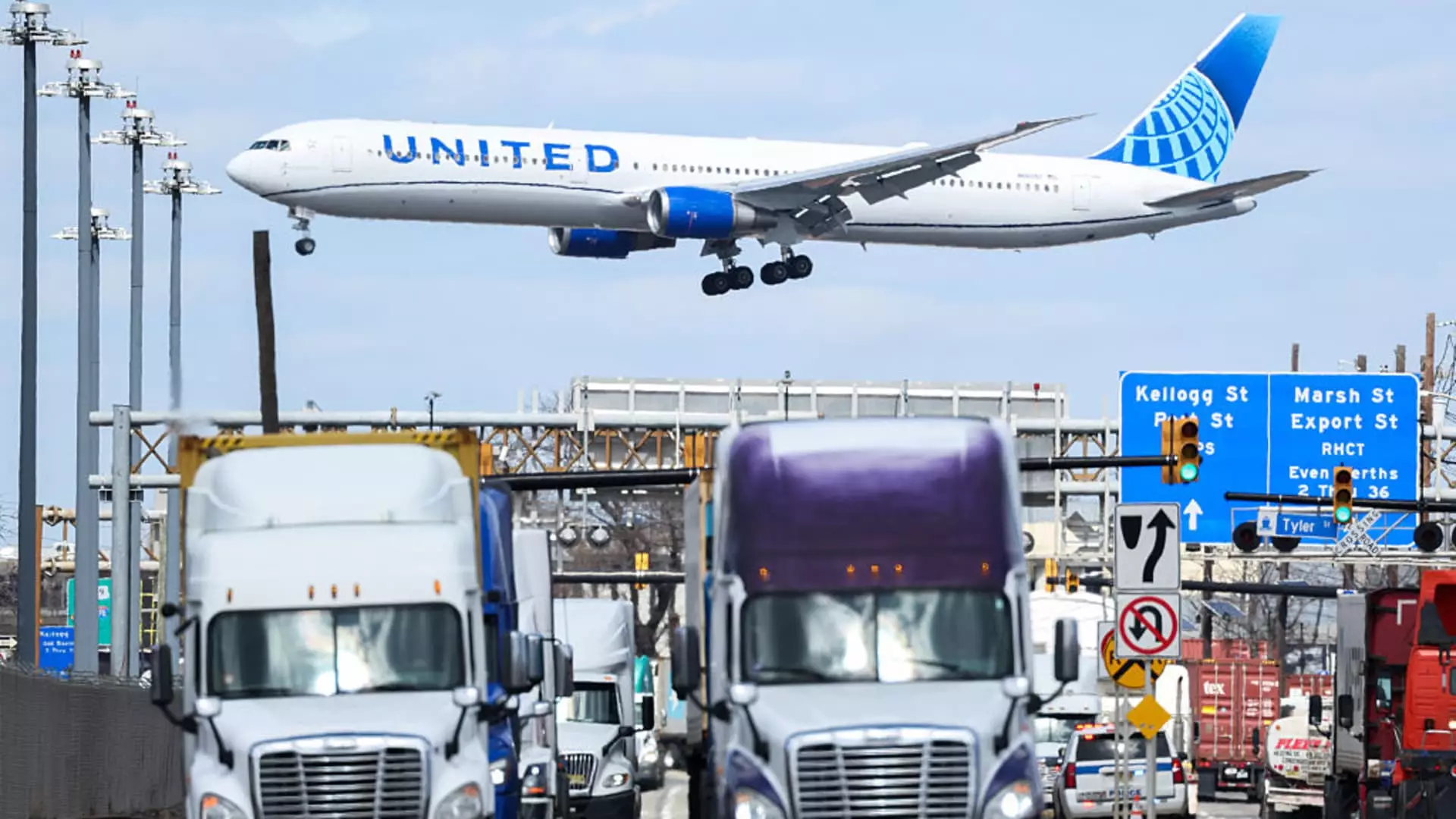In a world where economic stability is increasingly elusive, United Airlines emerges not only as a player in the airline industry but also as an emblem of the lived contradictions facing businesses today. Making headlines for its unwavering commitment to profitability even in a precarious economic landscape, United has opted to maintain its full-year forecast despite looming recessionary whispers. Yet, the very act of offering a second, markedly conservative forecast demonstrates a jittery awareness of the all-too-volatile economic state. United Airlines declares that predicting economic trends is impossible—an assertion that feels more like an excuse than a strategic outline.
The airline’s insistence on profitability as assured, even amid a potential downturn, smacks of misplaced optimism. Relying heavily on passengers willing to splurge on premium fares while domestic travel shows signs of stagnation presents a disconcerting dichotomy. With domestic capacity poised for a 4% cut, the airline’s confidence belies an admission that the travel landscape is shifting underfoot—even as international bookings remain robust. This curated focus on profitability only deepens the unsettling reality of their precarious balancing act.
A Slam Dunk or a Precarious Tightrope?
United’s latest earnings report paints a double-edged picture. On one hand, the airline celebrated a $387 million profit for the first quarter, a striking contrast to the losses incurred a year prior—a transformation seemingly propelled by their robust premium offerings. Adjusted earnings per share of 91 cents, surpassing Wall Street’s projections, reflect a bright spot in an otherwise turbulent economy. Yet, the underlying issues lurking within are impossible to ignore. While premium bookings soared by 17%, the unit revenue from domestic flights fell by 3.9%. Suddenly, this stellar financial performance feels less like triumph and more like survival, with profit margins being buffered by higher-end offerings exclusively available to those with deeper pockets.
As I examine this, I can’t help but question if United Airlines has strayed too far into elitism. The airline’s heavy focus on catering to affluent travelers could alienate the vast majority. The regular traveler—concerned with rising costs and economic instability—finds themselves left out in the cold, perhaps resigning to a future where flying is no longer a common convenience but a luxury reserved for the wealthy elite.
Industry Rifts in Navigating Economic Straits
The competitive landscape within the airline industry hints at a collective myopia. United’s key rival, Delta, has also adjusted its growth plans, echoing a sense of caution in the air. Their inability to reaffirm full-year forecasts brings an element of despair to this high-flying sector that has struggled through previous downturns. It’s increasingly evident that while tight margins have historically rewarded airlines with a profitable return, the ultimate question is how sustainable this model is during an economic slowdown.
United’s CEO Scott Kirby’s deep-seated optimism demonstrates an ambitious vision, yet the degree of volatility in consumer spending—fueled by unpredictable market conditions—raises significant flags. It prompts me to analyze whether this aggressive pursuit of retaining industry-leading margins in challenging economic times is rooted in realism or simply wishful thinking.
Profit-Driven versus People-Centric Strategies
What United Airlines represents goes beyond numbers on a balance sheet; it embodies a disconnect between the corporate elite and the average consumer. As the airline glides through its multiyear plan, one can’t help but question the larger implications for the traveling public. With decreasing domestic capacity and soaring prices, are companies like United looking beyond mere profits to consider customer loyalty and long-term sustainability?
The economic landscape of the United States continues to exhibit fluctuations that make discerning the future nearly impossible for consumers and businesses alike. Yet, the airline’s insistence on profit, even at the expense of customer accessibility, may ultimately lead to disillusionment. Airlines exist within a tapestry that’s woven from myriad consumer experiences, and a singular focus on profits, potentially at the cost of widespread accessibility, could unravel the fabric that has traditionally held the aviation industry together.
United Airlines might currently command its top-tier market, riding high on the waves of premium ticket sales. Still, the deeper reckoning surely lies ahead—a reminder that nothing can be guaranteed in a world where economic conditions are forever shifting, and consumer sentiments are anything but steady.


Leave a Reply